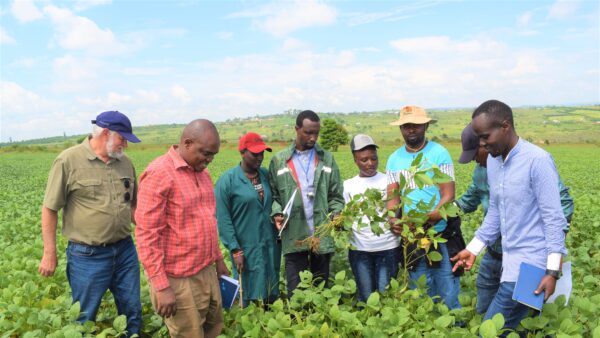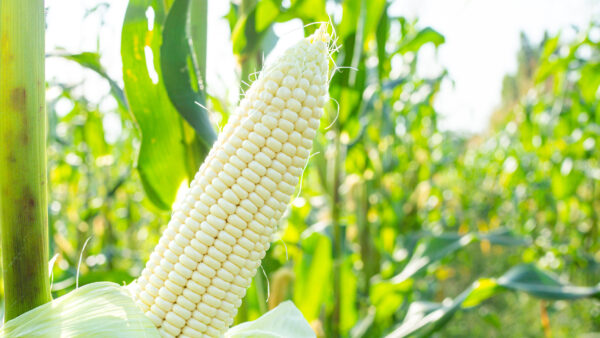With more data than ever being generated by companies in the agtech space, those same businesses need a way to make use of that data and capitalize on it. Enter Amazon Web Services.
When you hear the word Amazon, you probably think about online shopping. You might not necessarily think about the transformation of agriculture through cloud computing.
Amazon Web Services offers over 200 fully featured services to help customers leverage the power of cloud computing and derive real business insights from their data. That includes important areas for agriculture like making data useful, enabling machine learning and fueling innovation in artificial intelligence.
“We look after diverse set customers that span across the agri-food value chain which enables us to bring an integrated supply chain perspective as we collaborate with customers in developing their applications and innovating within their businesses,” says Elizabeth Fastiggi, head of worldwide agriculture for Amazon Web Services.

“Our customers include the major crop inputs companies and large equipment manufacturers who sit upstream from the farmer, all the way downstream to the grain and protein processors. We also look after the agtech startups with products and services throughout this value chain.”
Fastiggi partners with customers to create solutions that create a healthier, more transparent and more inclusive food system, and will speak at the upcoming World Agri-Tech Innovation Summit in San Francisco March 22-23.
With more data than ever being generated by innovators in the agtech space, companies need a way to make use of that data and capitalize on it. Doing so, however, requires a lot of computing power, which is expensive.
That’s where Fastiggi and Amazon Web Services come in. Amazon Web Services helps companies in the ag space like Bayer Crop Science to process data so it can bring new seed products to market.
“One important area in agriculture is the development of new seed genetics. There’s a lot of great data and information that is collected within research fields that can be used to develop different products. Bayer was in a situation where they were really trying to get petabytes of data and information out of those fields and back to their research scientists. Without help, it can take days to transfer and process that much data,” Fastiggi says.
“Bayer is now leveraging our Internet of Things (IoT) services to much more quickly upload that information to the cloud, and actually provide that information to their research scientists within hours. It’s a great example of accelerating time to market by providing data and insights much faster, and in some cases in real time, to those research teams.”
In an interview for Amazon Web Services, Fastiggi talked to Bayer Crop Science’s head of R&D Bob Reiter (who will also speak at the World Agri-Tech Innovation Summit) about the power of cloud computing and its role in helping farmers build resiliency. According to Reiter, historically, input suppliers didn’t look much further than the sale of the bag of seed or crop protection product to the dealer.
“Now we want to see beyond the farm to the end consumer, in addition to the typical data we receive regarding weather and crop forecasts that affect production. It’s definitely a changing world where farmers and agricultural organizations want to have more visibility into the entire food chain from beginning to end,” Reiter said in that interview from November 2020.
Cloud computing is now playing a huge role in agriculture. Agriculture organizations of all sizes, from large enterprises all the way through ag tech startups have a long history of building their applications on Amazon Web Services as they innovate, Fastiggi says. Agriculture, like so many industries, is really in the midst of a titanic shift to the cloud.

“Our goal is to help organizations do this easily, because we know that the cloud will enable them to innovate more quickly and cost effectively. From our perspective, there are really five big reasons why we see companies moving so quickly to the cloud and leveraging these capabilities,” Fastiggi says.
The first is agility. With technologies like those offered by Amazon Web Services, customers can deploy hundreds or even thousands of individual servers in minutes. That way, they can actually experiment more frequently and at a faster rate. That means the pace of innovation itself quickens, she says.
The second is around cost savings, according to Fastiggi. “By accessing web-based IT infrastructure on-demand, customers are trading that fixed capital expense that they would have to spend on their own servers for a variable expense, because they are using only what they need. That variable expense is actually quite a bit lower than they could possibly achieve on their own because of AWS’s economies of scale.”
Amazon Web Services has lowered its prices about 111 times since it began in 2006, she adds.
The third reason more companies are moving to the cloud is what she calls elasticity. “In agriculture, we have a lot of peak data loads that happen during critical planting or harvesting seasons. The ability to scale up and down and use just what you need is ideal, rather than making a big investment in cloud computing infrastructure and only using it to its full potential at certain times of the year.”
The fourth centers around helping companies focus their talent and hiring on what they are good at — the core mission of the company. “With the cloud, organizations can focus their teams on recruiting talent to develop applications that differentiate the business, rather than spending time maintaining data centers and servers.”
Last but not least, more companies are moving to the cloud so they can compete globally. Amazon Web Services operates its infrastructure around the world and has 84 of what it refers to as call availability zones (discrete data centers with redundant power, networking, and connectivity) across 26 different geographic regions, with plans to launch 24 more across eight regions.
“That enables our customers to move forward with confidence knowing they can operate globally and at scale across their global operations without any hiccups,” Fastiggi adds.
Being able to capture data across a multitude of platforms and process it via the cloud is a game-changer for agriculture that not only helps the bottom line, but contributes to environmental initiatives like reducing pesticide and fertilizer use, Fastiggi says. She references BASF’s Digital Farming system as an example.
“It runs on Amazon Web Services and has a scouting capability that is actually designed to improve sustainability. It can detect over 350 common weeds. This helps actually detect weed pressures early in the season and enables the farmer to be able to be much more targeted and prescriptive in their application of crop protection products,” she says.
“It’s a great example of a technology that is addressing a farmer’s real-time in-season needs, while also making agriculture more sustainable by improving outcomes and also reducing the need for inputs.”












